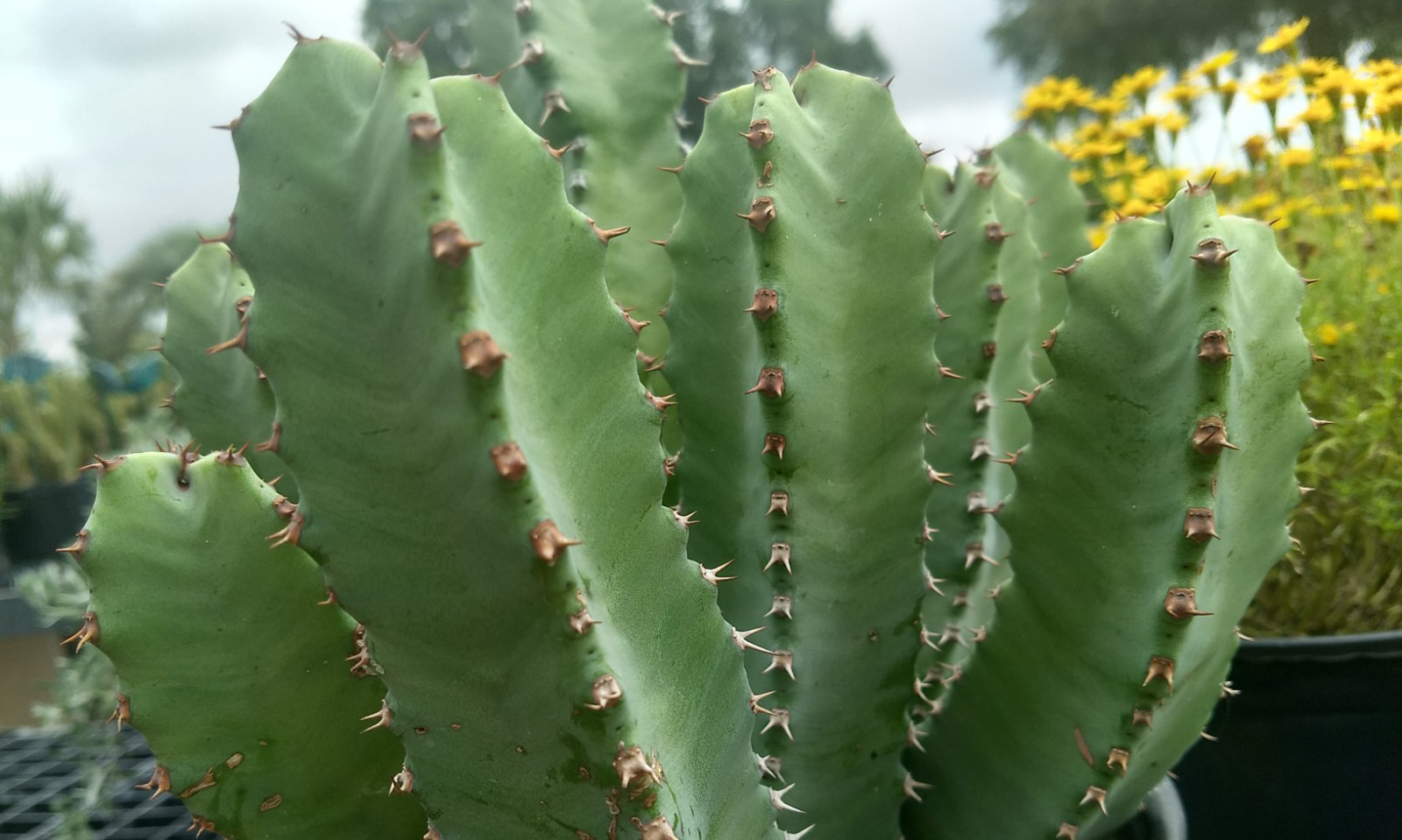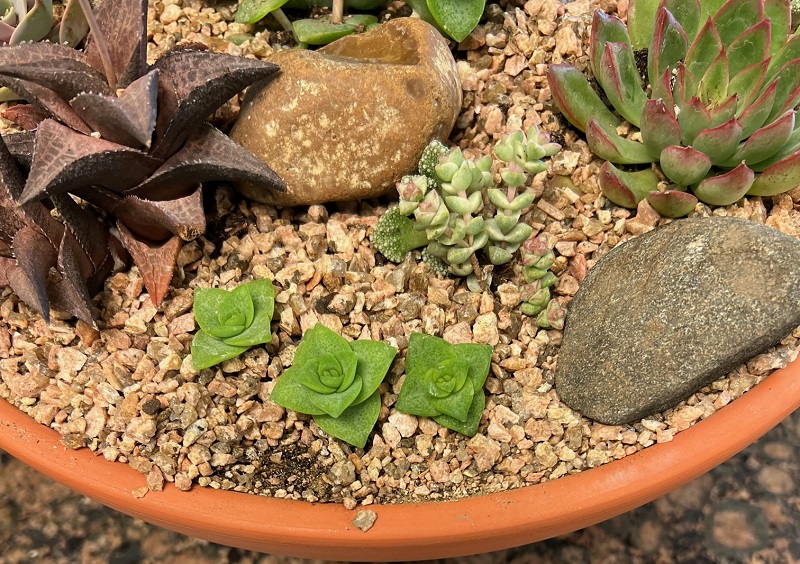This is the case of a cactus that is not actually a cactus, but is closely related. Technically, it is classified as a succulent, even though it does have spines. It is also related to the Christmas Poinsettia, but don’t tell it that!
This low-growing succulent has a lengthy history of cultivation, and is one of the oldest documented medical plants of all the Euphorbia species. Mounding to 1’-2’ tall and spreading to 4’ wide, its pale blue-green upright, four-sided stems are adorned with brown spines along the margins. Small yellow blooms line the margins in late winter to early spring.
Growing in full sun to light shade, it may be combine with other succulents in dish gardens, or grown as a specimen on its own. Good drainage is crucial, as well as infrequent watering. It has extreme heat tolerance. Sounds like a pretty easy plant to keep! It is hardy to 22°F, so simply protect when temperatures dip lower.
Recent medicinal research has shown that the plant’s sap contains a high concentration of a toxin that exhibits similar characteristics as capsaicin, the primary compound found in hot peppers. It is being evaluated as a starting point for the development of a novel class of analgesics. Handle the plant with care, as the latex can cause skin irritation or allergic reactions.



